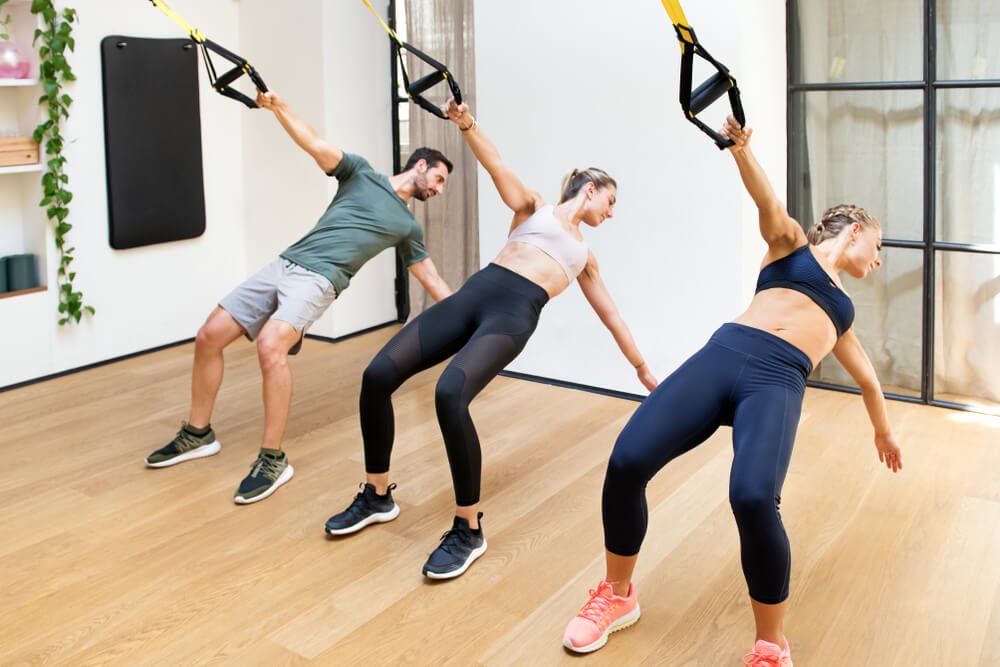TRAINING TIPS: UNILATERAL VS. BILATERAL TRAINING
When it comes to packing on the most muscle possible it is hard to beat compound movements. One of the reasons why they are so effective at building size and strength is that compound movements work both sides of your body at the same time. Working both halves of your body at the same time is referred to as bilateral training. Other movements that only train one side of your body are referred to as unilateral training movements. These movements, such as lunges, are good at isolating specific muscle groups.
So, when it comes to designing your own training protocol, should you include more bilateral movements than unilateral movements? At first thought, you would think bilateral is the way to go. You can usually handle more weight than with unilateral movements, and bilateral movements tend to be the most efficient for training. So, what do you do?
Advantages of Bilateral Training
Most people love bilateral training movements. These are your exercises like squats, bench presses, and deadlifts. You are working both sides of your body at the same time and can push your body beyond its natural limit to force it to grow and get stronger. In other words, you can pick up some heavy sh*t and impress your fellow gym goers with your display of manly strength. Most expert trainers will design their clients’ programs around the big three. They are extremely efficient exercises. You train the most muscle groups in the shortest amount of time when you use bilateral training.
And yes, even I like to make workouts for people based on the big three compound movements. However, the older I get, the more I have come to realize that bilateral training is not always the best way to go to gain the most muscle and strength possible. Did you just read that correctly? Yes, yes you did.
Advantages of Unilateral Training
Like I mentioned above, I am a big fan of bilateral training. I have been doing it for decades. However, I started to notice major imbalances after an ankle injury. The result was overuse of dominate muscle groups that ultimately lead to multiple injuries.
Most of my issues started after my junior year in college. I suffered a high ankle sprain in a basketball intermural league and was on crutches for two weeks. I was back in action lifting and playing basketball at 100% after six weeks. However, I had developed a weakness in my left ankle that would lead to several injuries within the next decade.
My first injury occurred after a friend of mine didn’t believe that I used to be able to dunk a basketball in college (I’m only 5’11”). So, I naturally did what any sane-minded adult male would do. I went out to the basketball court and proved him wrong. Unfortunately, after I landed, I realized that I had hurt my knee. I’m not sure exactly what happened, but I think that the weakness in my left ankle caused my left knee to take too much of the load when I landed.
And then there was my second flag football injury. The first injury resulted in 11 stiches to my forehead to close the hole from the collision with an opposing player’s elbow. The second injury happened when I was in some of the best shape of my life. I was 230 lbs. and ripped, plus I still had all my speed. During the last game of the first day of the tournament, one of the opposing teams decided to test my speed. I not only caught up to the receiver (he had a 5-yard jump on me) but I deflected the pass at the last moment. The opposing team’s receiver was so shocked that I caught him that he ended up falling on the play. I on the other hand felt a slight squeeze in my right hamstring. I was on crutches for two weeks, and the half of the back of my right leg was black and blue for a week.
I hurt my leg because my right leg had been taking most of the load in everything I did. Running, squatting, bench pressing, etc. The result was that I was out of alignment. I was strong as on ox, but what’s the point if you are lifting 500+ pounds and your right leg is doing 65% of the work? You won’t notice much of a difference in the size of your muscles, but you will notice a difference in their strength.
Who would have thought that an old ankle injury from the good ole college days could have caused so many issues? Is there anything you can do? Yes, unilateral training.
TRAINING TIPS: UNILATERAL VS. BILATERAL TRAINING CONCLUSION:
Unilateral training allows you to activate the neuro pathways of each side of your body separate from one another. For example, the split squat is an example of a unilateral exercise for your legs. Lunges are also unilateral exercises. As you get stronger and your imbalances correct themselves, your bilateral movements will also get stronger. And more importantly, you will give your muscles the proper rest they need to fully recover and prevent injuries.
In the next part of this series, I will go over the best ways to incorporate unilateral movements into any workout plan.
For more informative bogs by Chaos and Pain click here.


















Leave a comment
All comments are moderated before being published.
This site is protected by hCaptcha and the hCaptcha Privacy Policy and Terms of Service apply.